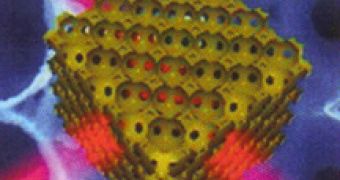The building block of quantum computers is the qubit, a unit of quantum information that can be made up of either atoms or photons. Atoms have a long coherence time, so they're used as "stationary" qubits, the nodes of the network, while photons are the "flying" cubits, the quantum channels connecting the nodes.
Matter could be used as a medium to make photons talk to one another, but there's a big problem, the fact that these photonic interactions are too weak to be harnessed in viable computer applications. A new method of strengthening these interactions, or nonlinearities is now proposed by a team of MIT physicists.
Led by Peter Bermel, a postdoctoral associate in the Research Laboratory of Electronics, the team devised a scheme that could strongly enhance the strength of the interactions between photons in a way that was never explored before.
Their method consists in using a nonlinear material, placed inside a photonic crystal. These crystals are periodic optical nanostructures designed to affect the motion of photons in a similar way that periodicity of a semiconductor crystal affects the motion of electrons.
The photonic bandgap of these crystals is a property that almost perfectly reflects photons, thus allowing more time for interactions to take place. Enhancing these optical nonlinearities could produce a lifetime 40 times greater, for single nanocrystals of cadmium selenide, which could translate to the ability to create nonlinear devices with much lower powers and volumes.
A wider band gap means there is a broader spectral range where scientists can control the flow of light, which could prove very useful in various applications, from low-threshold lasers to highly efficient solar cells, where photonic crystals with wide band gaps may be required.
This is a huge step towards quantum computing applications using the reversible transfer of a qubit's state, without disruption from the outside world.

 14 DAY TRIAL //
14 DAY TRIAL //